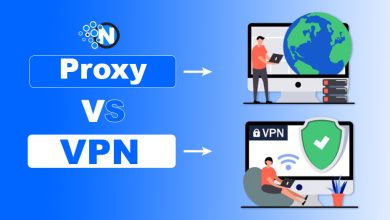Signs of Information Vulnerability In a Company
Information security today plays an important role in protecting data and the company’s reputation. Modern cyber threats are becoming increasingly advanced.
According to Varonis, the average cost of a data breach in 2024 was $4.88 million, which is the highest average on record.
Avoiding information vulnerability in a company requires taking cyber protection measures both within the company and using third-party specialized protection technologies such as an attack surface management platform, dark web monitoring tools, and pentesting.
In this article, I will discuss the main signs of information vulnerability in a company and the causes of information leaks.
The Essence of Information Leakage
The concept of information leakage is used to denote the uncontrolled dissemination of important information outside the company, facility, or circle of persons authorized to access certain data. When such facts are identified, prompt intervention is necessary. Of course, the best option for solving such problems is to carry out preventive measures to prevent the leakage of information that falls into the category of limited access.
At this stage of technology development, four means of transmitting information are available: light beams, physical media (photos, paper, magnetic storage devices, etc.), sound, and electromagnetic waves. All of them are components of communication systems, which necessarily include:
- data source;
- repeater;
- data transmission channel;
- receiver;
- object receiving information.
When using one or more of the data transmission means listed above, a person can accidentally or intentionally initiate information leakage.

In this regard, there is a need to organize control that will make the process of data transmission fast, reliable, and safe. In the absence of the required level of data transmission channel security, when information is transmitted without the knowledge of its source, it is called an information leakage channel.
Causes of Information Leaks
The most common causes of information leaks:
- Insufficient protection of other people’s information by a trusted party.
- Inept handling of data storage systems (technical reasons).
Such reasons occur when conditions allow for leaks:
- Insufficient level of competence of employees working in the field of information security, their lack of understanding of the importance of data security, as well as an irresponsible attitude to their activities.
- Use of unlicensed software or uncertified programs for protecting clients and personal data.
- Insufficient control over the means of protecting important information.
- High turnover of personnel involved in this area of activity.
If there is a leak of information, then the blame for this lies with the employees and managers of the organization that was supposed to protect it. Attacks by intruders can be prevented by using modern cybersecurity tools and security measures that employees of a particular company and management should take into account. Note that there are situations that the organization responsible for the safety of data cannot influence:
- Global disasters.
- Natural disasters.
- Failures at technical stations, equipment failure.
- Unsuitable climate.
Types of Information Leakage Channels
Information leakage channels are options and directions for moving data from the system; an unwanted chain of information carriers, one or more elements of which are violators of rights to process data or belong to the category of special equipment for their theft. They act as the main component in the data protection system and are a factor in information security.
Different types of information leakage channels are divided into two groups: direct and indirect. The second group includes chains that do not request access to special equipment of the information system. Direct channels require access to hardware.
Indirect information leakage channels include:
- Lost, stolen, or lost information storage device, examination of an undeleted recycle bin.
- Eavesdropping, remote photography.
- Interception of electromagnetic devices.
Examples of direct information leakage channels:
- Human factor. Data leakage due to non-compliance with the commercial secret regime.
- Direct copying of data.
As you can see, there are many ways for data to leak, so the better the protection is organized, the greater the chances of avoiding trouble and noticing a leak in time. Here it is important to pay attention to such modern tools as attack surface management platforms and platforms for dark web monitoring.
5 Main Signs of Information Vulnerability In a Company
A company’s information vulnerability is a set of factors that make its data and systems more accessible to cyberattacks and leaks. Let’s look at the main signs of information insecurity.
1- No corporate security concept has been formed
The absence of a well-thought-out corporate security concept and measures to implement a trade secret protection regime poses a potential threat of information leakage. Developing a company policy in this area gives each employee an understanding of how the system works and what they should do to control data transfer.
In turn, a trade secret regime brings the information security policy into line with legal norms.
2- High staff turnover or layoffs
High levels of specialist rotation and massive layoffs at enterprises create a threat of information leakage. In a state of dissatisfaction with their dismissal, employees can contribute to the uncontrolled leakage of confidential data.
3- Social networks, instant messengers, email
Social networks, email, and instant messengers are becoming the main channels for information leakage today. The situation when they are not controlled at an enterprise can be compared to a car that is parked on the street with the ignition on and unattended.
4- Uncontrolled document circulation at the enterprise
It is necessary to take measures to limit access to important information of those company employees whose job responsibilities do not involve working with such data. The enterprise must implement documentation control to prevent it from falling into the hands of outsiders.
Business owners and company managers do not always have an idea of the consequences that await them if their enterprise documentation ends up in the hands of certain individuals.
5- Ignoring modern cyber security tools
Ignoring modern cyber security tools, including platforms of attack surface management or dark web monitoring tools, indicates weak information security in the company. In the context of the growing complexity of cyber attacks, the lack of modern solutions increases the risk of unauthorized access to data, leaks of confidential information, and financial losses.
Conclusion
Information vulnerability is a serious challenge for companies, given the rapid development of technologies and the emergence of new cyber threats. Ignoring cybersecurity measures, as well as modern tools for data protection and tracking cyber incidents, increases the risk to valuable data and systems in the company.
Using all possible tools for cyber protection allows businesses to promptly identify vulnerabilities and take proactive measures to eliminate them. We recommend paying attention to ImmuniWeb, a provider of effective cyber protection solutions, including an attack surface management platform, pentesting tools, and dark web monitoring.




